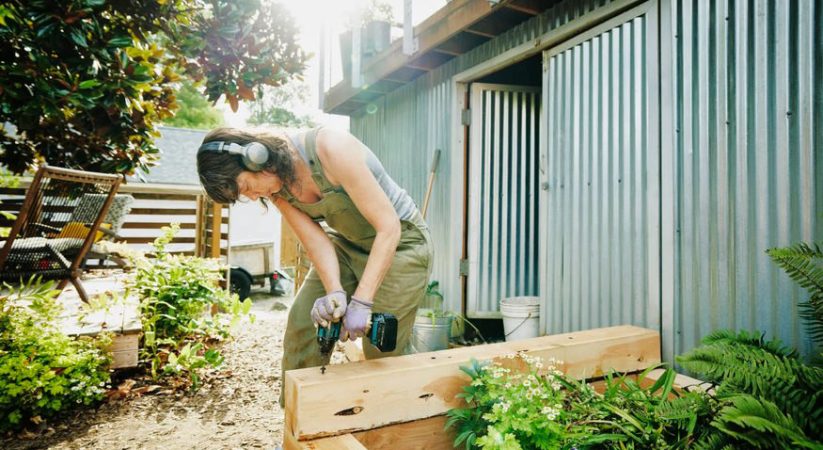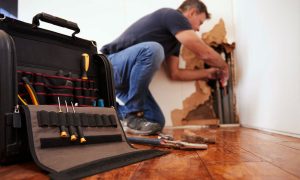Welcome to the world of eco-friendly home repairs, where you can save money and reduce your carbon footprint at the same time. It’s no secret that our planet is facing a crisis due to climate change, and every little step we take towards sustainable living counts. Home repairs can be expensive and harmful to the environment, but with a few simple changes, you can make a big difference. In this blog post, we will explore some tips and tricks for making your home repairs more eco-friendly, allowing you to save money and help the planet at the same time. Whether you’re a homeowner or a renter, these easy-to-implement solutions can help you make a positive impact on the environment while keeping your home in tip-top shape. So, let’s get started and discover how to make eco-friendly home repairs!
Sustainable Materials for Home Repairs
In recent years, there has been a growing awareness of the importance of sustainable materials in all aspects of life, including home repairs. Sustainable materials are those that have a minimal impact on the environment, both in their production and disposal, and are often made from renewable resources. Here we will explore the benefits of using sustainable materials for home repairs and some examples of eco-friendly options.
Benefits of using sustainable materials for home repairs:
- Reduced environmental impact: Sustainable materials are typically made from renewable resources and have a lower environmental impact than traditional building materials. They often require less energy to produce and generate less waste during the manufacturing process.
- Healthier living environment: Many sustainable materials are non-toxic and emit fewer harmful chemicals into the air. This can improve indoor air quality and create a healthier living environment for occupants.
- Cost-effective: While sustainable materials may have a slightly higher upfront cost, they often have a longer lifespan and require less maintenance, resulting in cost savings over time.
- Increased home value: As more and more people prioritize sustainability, homes made with sustainable materials are becoming more desirable to buyers, which can increase the value of a property.
Examples of sustainable materials for home repairs:
- Bamboo: Bamboo is a fast-growing, renewable resource that can be used for flooring, cabinets, and even furniture. It is durable, affordable, and has a low environmental impact.
- Recycled glass: Recycled glass can be used for countertops, tiles, and even insulation. It is made from post-consumer waste and requires less energy to produce than traditional glass.
- Cork: Cork is a renewable resource that can be used for flooring and wall coverings. It is durable, moisture-resistant, and has natural sound-absorbing properties.
- Salvaged wood: Salvaged wood can be repurposed for flooring, furniture, and even accent walls. It reduces the demand for new wood and gives a unique, rustic look to a home.
How to buy sustainable materials for home repairs from Poland in India:
- Research sustainable material suppliers in Poland and contact them to inquire about shipping to India.
- Ensure to verify if there are any limitations on international money transfers or customs requirements when send money from Poland to India.
- Compare prices and shipping costs to ensure you are getting the best value.
- Consider the environmental impact of shipping materials from overseas and weigh the benefits of using local sustainable materials instead.
- Plan ahead to allow for shipping time and any potential delays.
In conclusion, using sustainable materials for home repairs is a smart choice for both the environment and homeowners. From bamboo flooring to salvaged wood, there are plenty of eco-friendly options available. With a little research and planning, it is possible to buy sustainable materials from Poland and incorporate them into home repairs in India.
Assessing Your Home’s Eco-Friendliness
Before you can start making eco-friendly repairs to your home, it’s important to assess your home’s current level of sustainability. By conducting a home energy audit, you can identify areas that need improvement and make informed decisions about the repairs you need to make.
Conducting a home energy audit involves inspecting your home to find out how much energy you use and where you can make changes to reduce your energy consumption. You can hire a professional to conduct the audit, or you can perform it yourself.
During the audit, you will need to inspect your home’s insulation, windows, doors, heating and cooling systems, lighting, and appliances. You will also need to review your utility bills to see how much energy you use and how much you pay for it.
Identifying areas that need improvement is a crucial step in making eco-friendly repairs to your home. Once you’ve identified areas that need improvement, you can prioritize your repairs based on the most significant impact they will have on your home’s energy efficiency.
Understanding the environmental impact of your home repairs is also an important consideration. Many traditional home repair methods involve the use of non-sustainable materials and processes that can harm the environment. By using eco-friendly materials and processes, you can significantly reduce your carbon footprint and make a positive impact on the environment.
By taking the time to assess your home’s eco-friendliness, you can make informed decisions about the repairs you need to make and the materials and processes you need to use. Making sustainable repairs to your home not only benefits the environment but can also save you money in the long run by reducing your energy consumption and utility bills.






